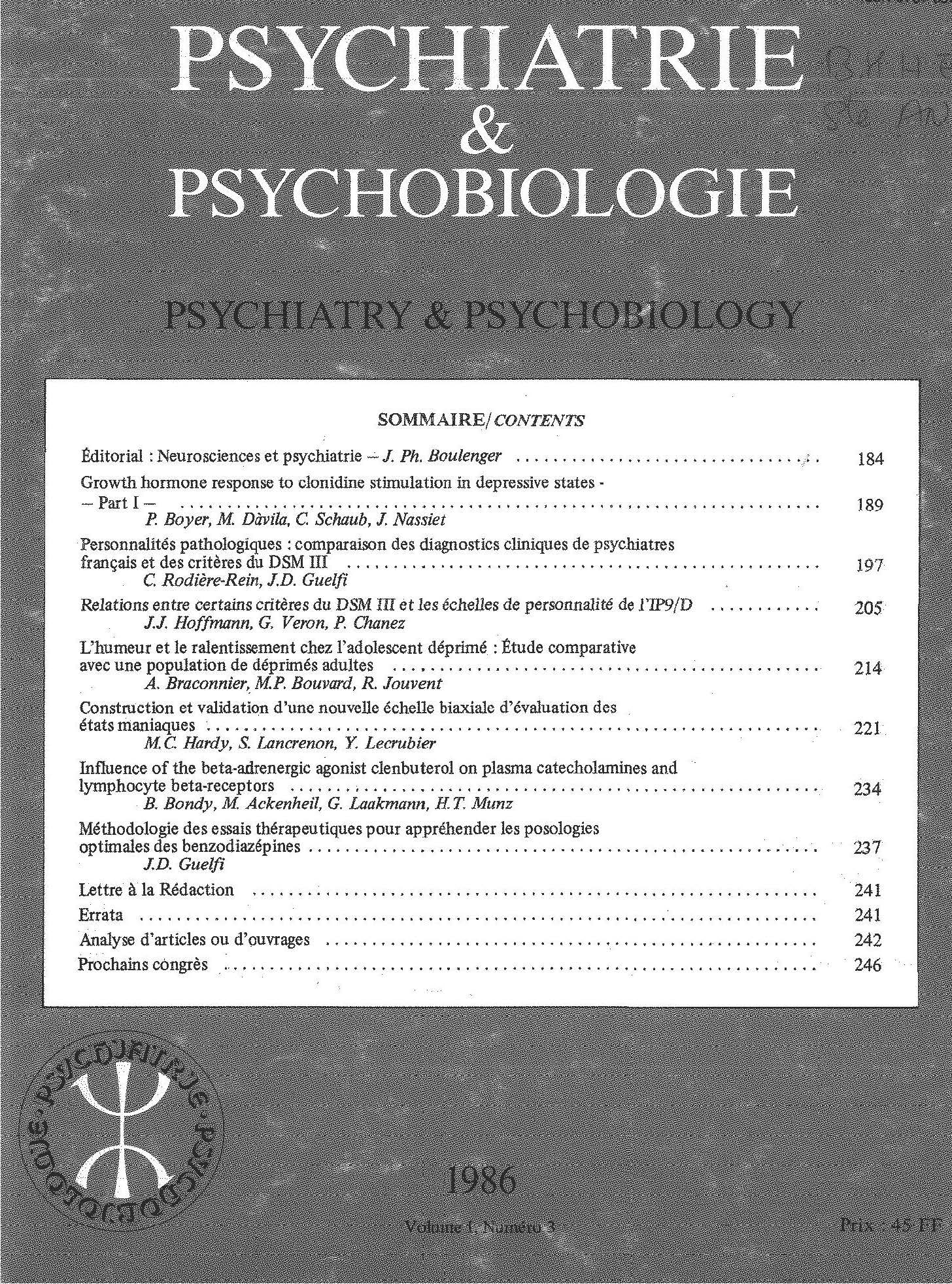Article contents
Comorbidity of anxiety disorders and depression: does it affect course and outcome?
Published online by Cambridge University Press: 28 April 2020
Summary
The comorbidity of anxiety disorders and depression, and its effect on course and outcome was examined by using data from the Munich Follow-up Study (MFS). The MFS is a prospective 7 year follow-up study in both a clinical sample of originally 291 former inpatients as well as a representative sample (N = 657) from the general population. Diagnoses were based on the Diagnostic Interview Schedule (DIS) not using the optional DSM-III exclusion rules. Based on earlier studies the temporal relationship of diagnoses was examined by using the age of onset and recency codings of the DIS, correcting for inaccuracies in patients’ judgement. The results showed: 1), Comorbidity seems to be a rather frequent and stable phenomenon in clinical and epidemiological samples. The comorbidity rates of the DIS/DSM-III diagnoses, amounted to about 50% in the epidemiological and 75% in the clinical sample. 2), The majority of the subjects with both disorders indicated an onset of anxiety disorders before that of a major depressive syndrome. None of the cases developed a major depressive episode prior to an anxiety disorder. 3), A less favorable course and outcome was generally found for subjects with both disorders (anxiety and depression), although the predictive value of the diagnostic grouping was meager. Clear differences were found for “pure” disorders (anxiety only, depression only) in the clinical and epidemiological sample. 4), Regardless of whether a depressive episode was present at the time of the follow-up investigation, the mixed group had the worst outcome of all other comparative groups.
Résumé
Les données de l'étude longitudinale de Munich (MFS ou Munich Follow-up Study) ont permis d'étudier la comorbidité des troubles anxieux et de la dépression et le retentissement de cette comorbidité sur l'evolution des pathologies. La MFS est une étude prospective sur 7 ans portant à la fois sur un échantillon représentatif de 657 sujets et sur un échantillon clinique à l'origine de 291 patients ayant fait un séjour en milieu hospitaller. Les diagnostics ont été portés a l'aide du DIDS (Diagnostic Interview Schedule), sans utiliser les règles d'exclusion optionnelles du DSM III. Les principaux résultats sont les suivants: (1) La comorbidité est un phénomène relativement fréquent et stable à la fois dans les échantillons cliniques et dans ceux des études épidémiologiques. La comorbidité des diagnostics DIS/DSM III est d'environ 50% dans les échantillons des études épidémiologiques et de 75% dans les échantillons cliniques, même en excluant les troubles de la personnalité classés sur l'axe II. (2) Chez la majorité des sujets présentant les deux types de troubles l'installation des troubles anxieux précède celle des troubles dépressifs, aucun des sujets n'ayant présenté d'épisode dépressif majeur avant les troubles anxieux. (3) L'évolution se révèle moins favorable pour les sujets présentant à la fois les troubles anxieux et dépressif. (4) Le groupe correspondant à la pathologie mixte (anxiété + dépression) a la moins bonne évolution de tous les groupes, et ce qu'un épisode dépressif ait été présent ou non au moment de l'enquête longitudinale.
- Type
- Original article
- Information
- Copyright
- Copyright © European Psychiatric Association 1989
References
- 25
- Cited by



Comments
No Comments have been published for this article.